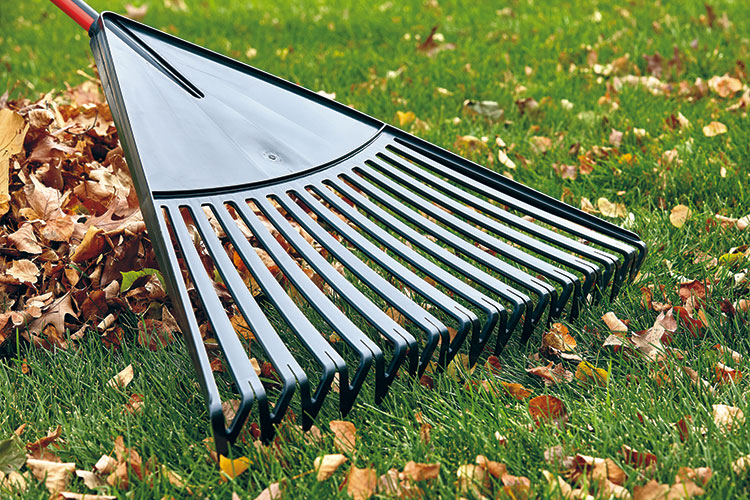Picking the best garden rake means matching the task to the tool! Smart rake selection turns routine upkeep into quick passes. Think of it as one of the truly essential gardening tools for shaping beds, spreading mulch, and prepping seedbeds. This comprehensive guide will teach you everything you need to know about choosing between the different types of rakes!
Clean paths, level beds, and healthier plants often trace back to the right head and tine shape. Quick examples, A bow rake levels soil, breaks clods, and moves gravel, while a leaf rake clears light debris without tearing turf, and thatch rakes lift old grass to boost lawn recovery.
Ready for more? Let’s get started!
Why the Right Rake Matters in Gardening
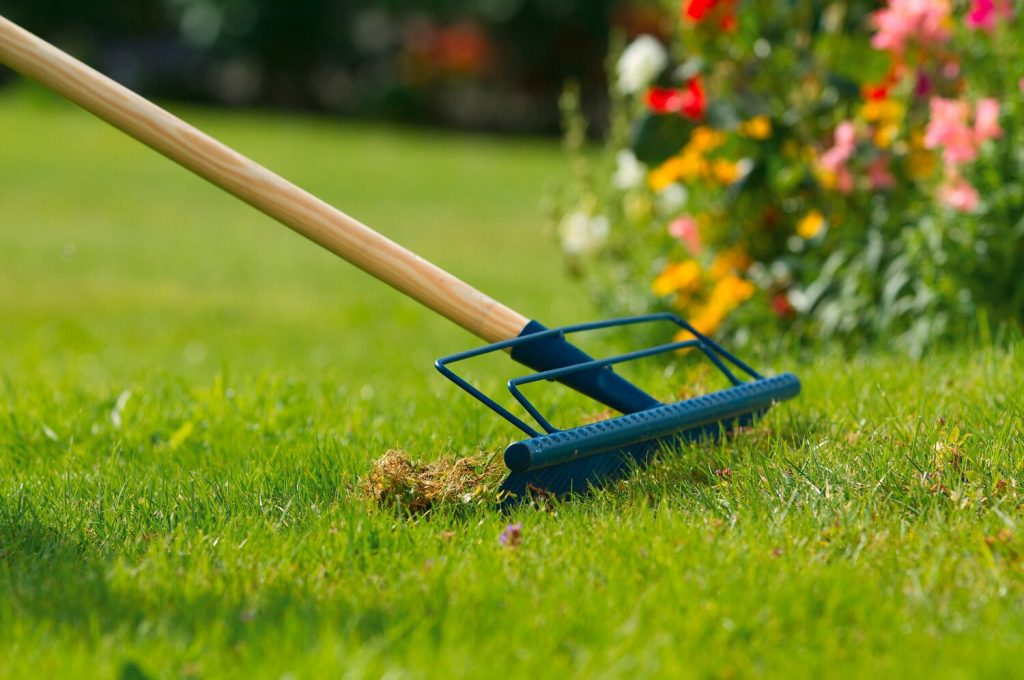
Clean beds come together faster with a quality rake, boosting efficiency from soil prep to cleanup. Bow or level-head styles break clods, mix amendments, and level seedbeds, underscoring the importance of garden rake choice for smooth planting.
Leaf rakes scoop leaves and light debris without tearing turf or tender stems, while sturdy garden rakes handle stones and mulch. Use overlapping pulls, gather into rows, then flip the head to smooth. These effective raking techniques keep beds even and ready. Round out your garden maintenance tools with a shrub or thatch rake for tight spots and lawn thatch removal.
Author’s Note: Check out our post Essential Gardening Tools For Beginners for a comprehensive guide to what every beginner gardener needs on hand!
Exploring Different Types of General Rakes and Their Uses
Three types of rakes handle most yard jobs: landscape, garden, and leaf. Landscape rakes carry a wide, rigid head that levels soil and gravel, pulls rocks, and preps seedbeds across larger areas.
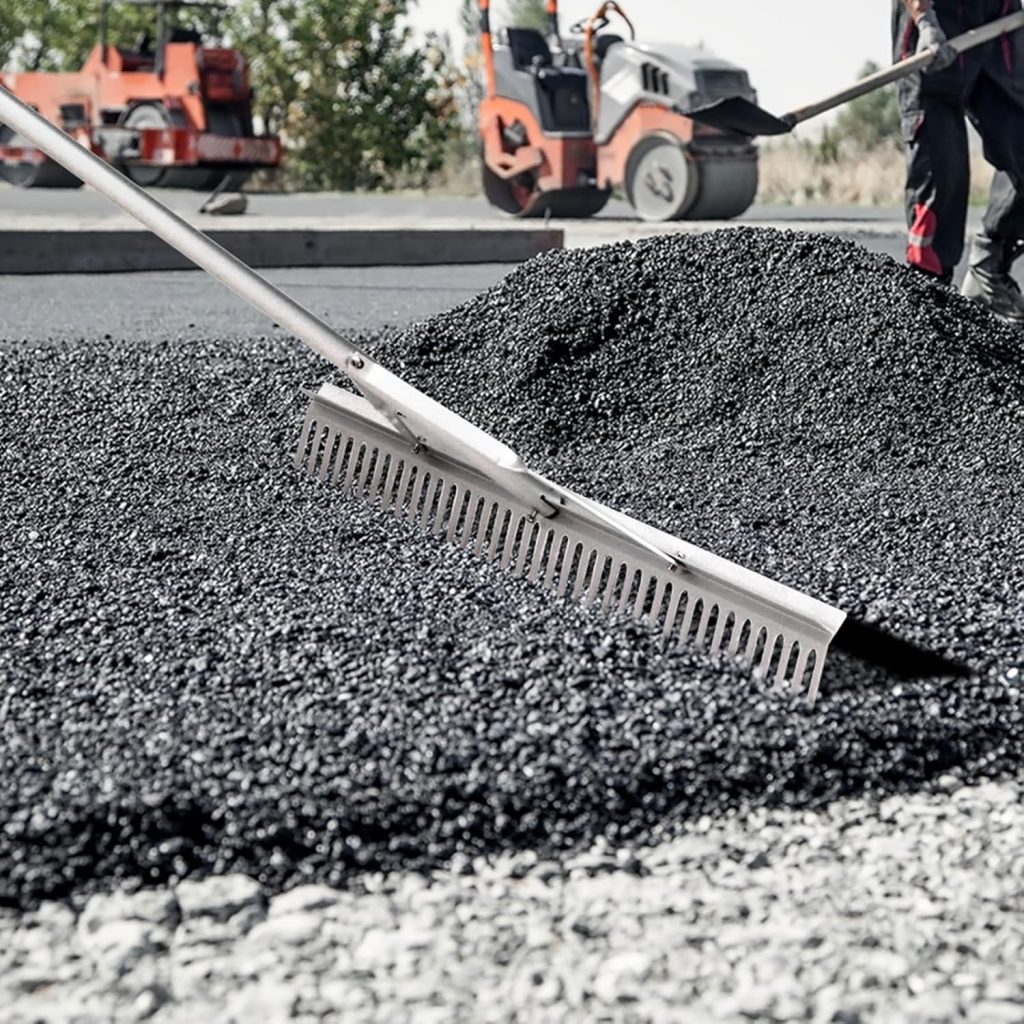
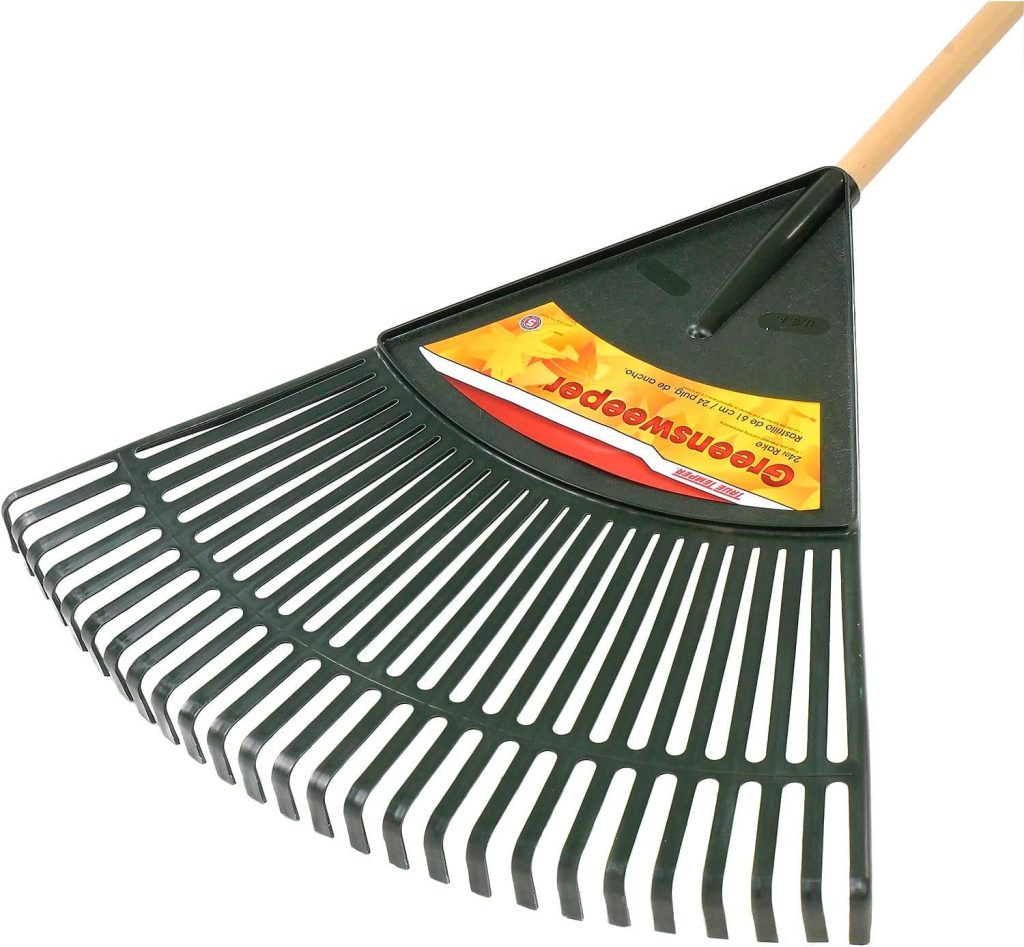
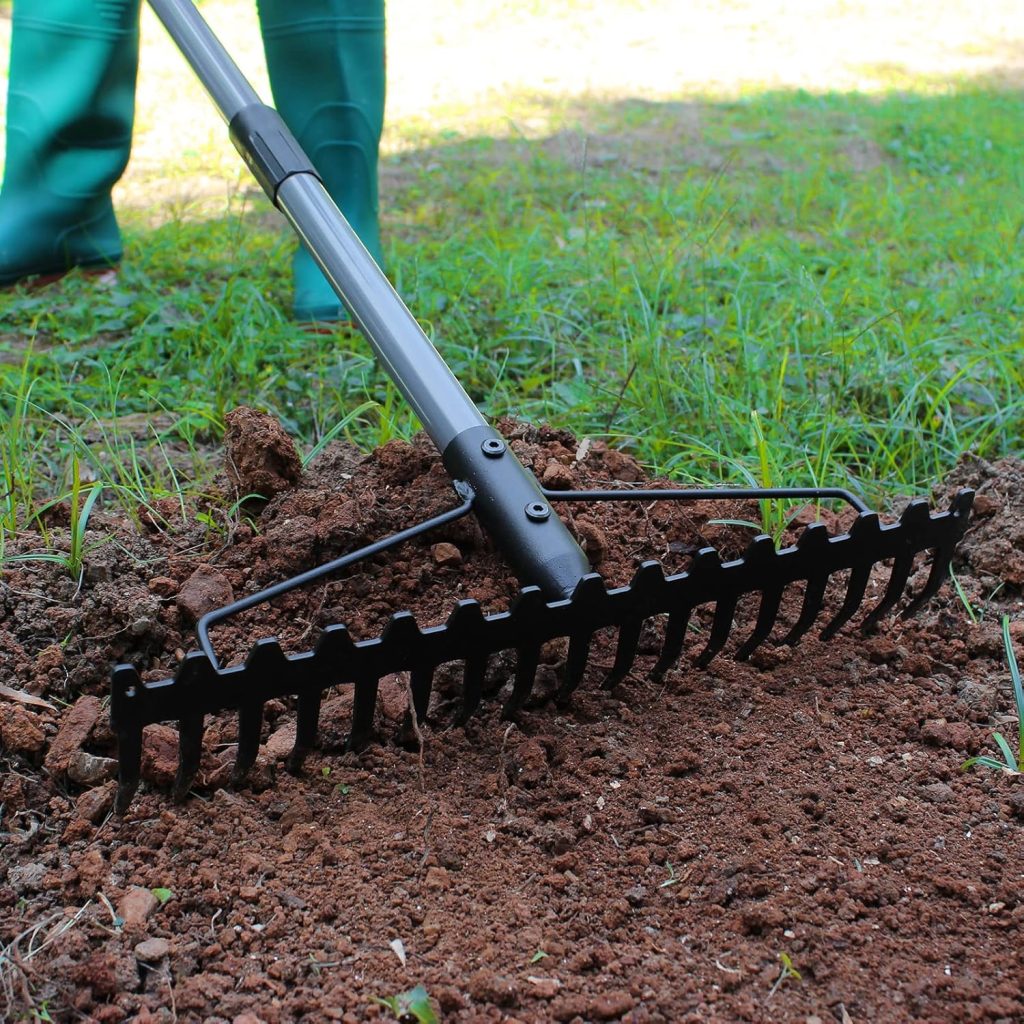
Union Tools Poly Leaf Rake (Middle)
Walensee Bow Garden Rake (R)
A garden rake (bow or level head) has short, stiff tines for breaking clods, pulling mulch, and smoothing beds, which often makes it the best rake for soil work. When comparing the leaf rake vs garden rake, the leaf rake’s fan of flexible tines gathers leaves and light debris without tearing turf or tender plants, while the garden rake tackles heavier materials.
Exploring Different Types of Specialty Rakes and Their Uses
Not all rakes are created equal, as mentioned, each is designed with a specific purpose to make gardening tasks easier, faster, and more efficient. From clearing stubborn thatch to spreading mulch or pulling weeds, specialty rakes can transform how you care for your lawn and garden.
Below are four versatile rake types and how they can help you get the job done,

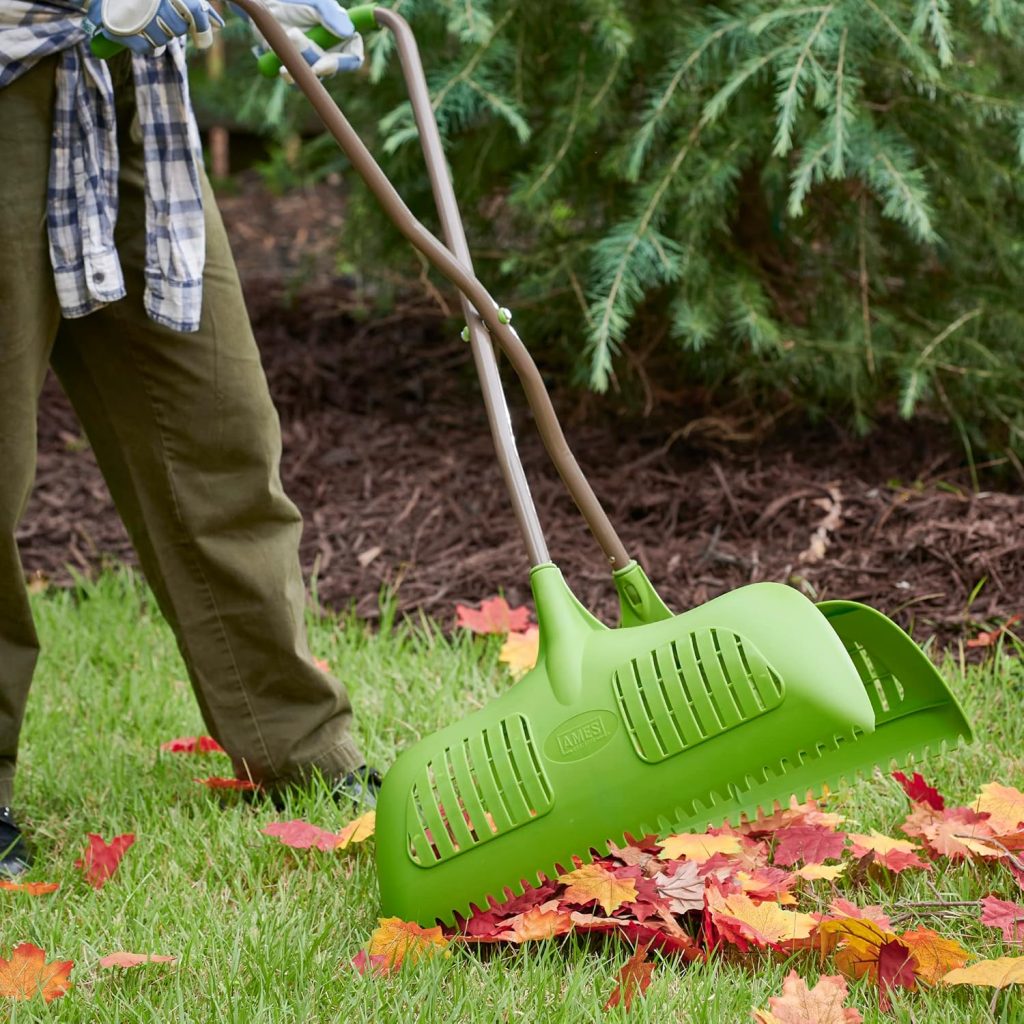
AMES Leaf Grabber Rake (R)
Weed Puller/Hoe Tool: This hybrid rake-hoe tool loosens compacted soil and pulls weeds up from the roots in one motion. It’s ideal for tackling invasive weeds in garden beds, pathways, or even tight spots in your lawn without the need for chemicals.
Grabber Rake: A grabber rake, sometimes called a leaf grabber, uses clamping or scissor-like ends to collect and lift leaves, grass clippings, and yard debris without constant bending. It’s perfect for gardeners looking to save time and reduce strain during seasonal cleanup.
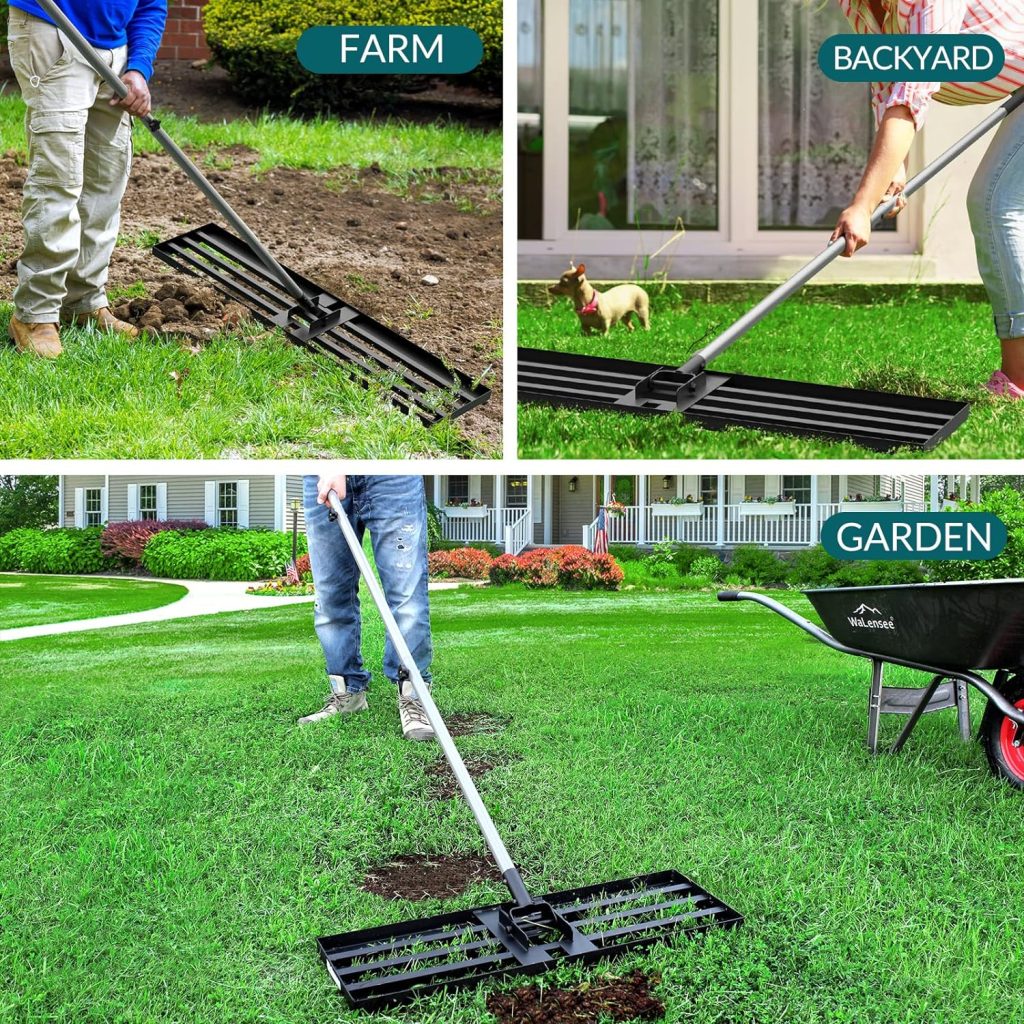
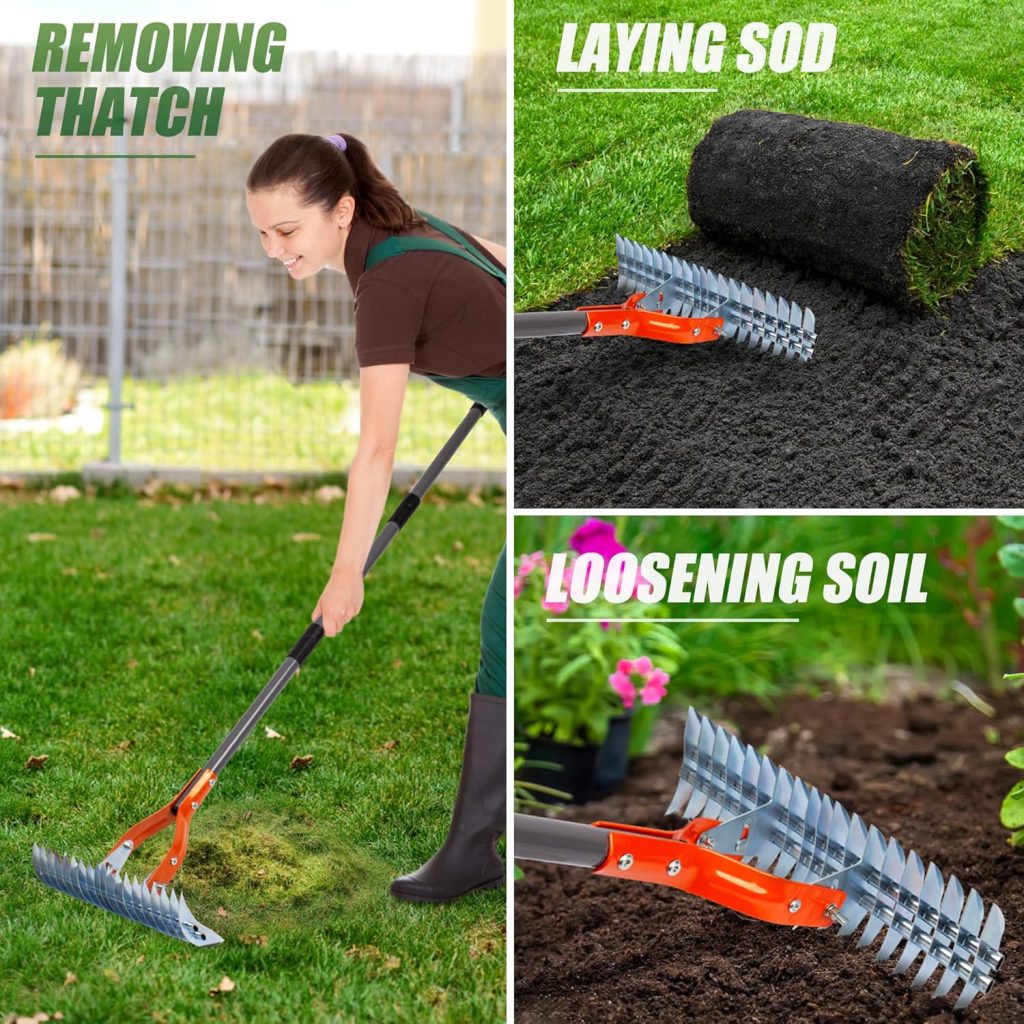
Walensee Versatile Thatch Rake (R)
Spreader Rake: With its flat, wide head, a spreader rake excels at evenly distributing mulch, compost, gravel, or grass seed. It’s a go-to tool for creating smooth, level surfaces in flower beds, vegetable gardens, and new lawns.
Thatch Rake: A thatch rake features sharp, curved tines designed to dig into turf and remove built-up thatch, which are layers of dead grass, roots, and organic matter that can block water and nutrients. Regular dethatching promotes a healthier, greener lawn which can highlight your adjacent gardens. And it can also be used to prep your garden’s soil.
Metal or Plastic? Choosing the Right Rake Material
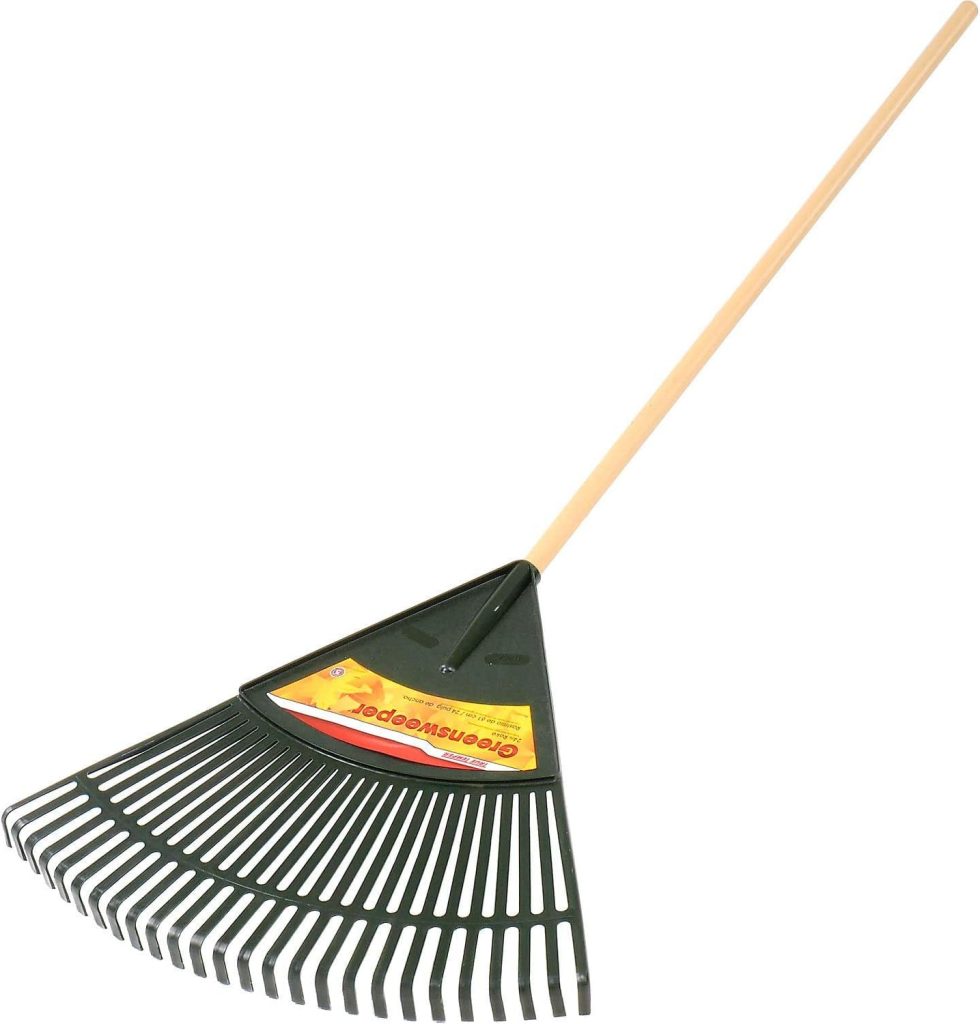
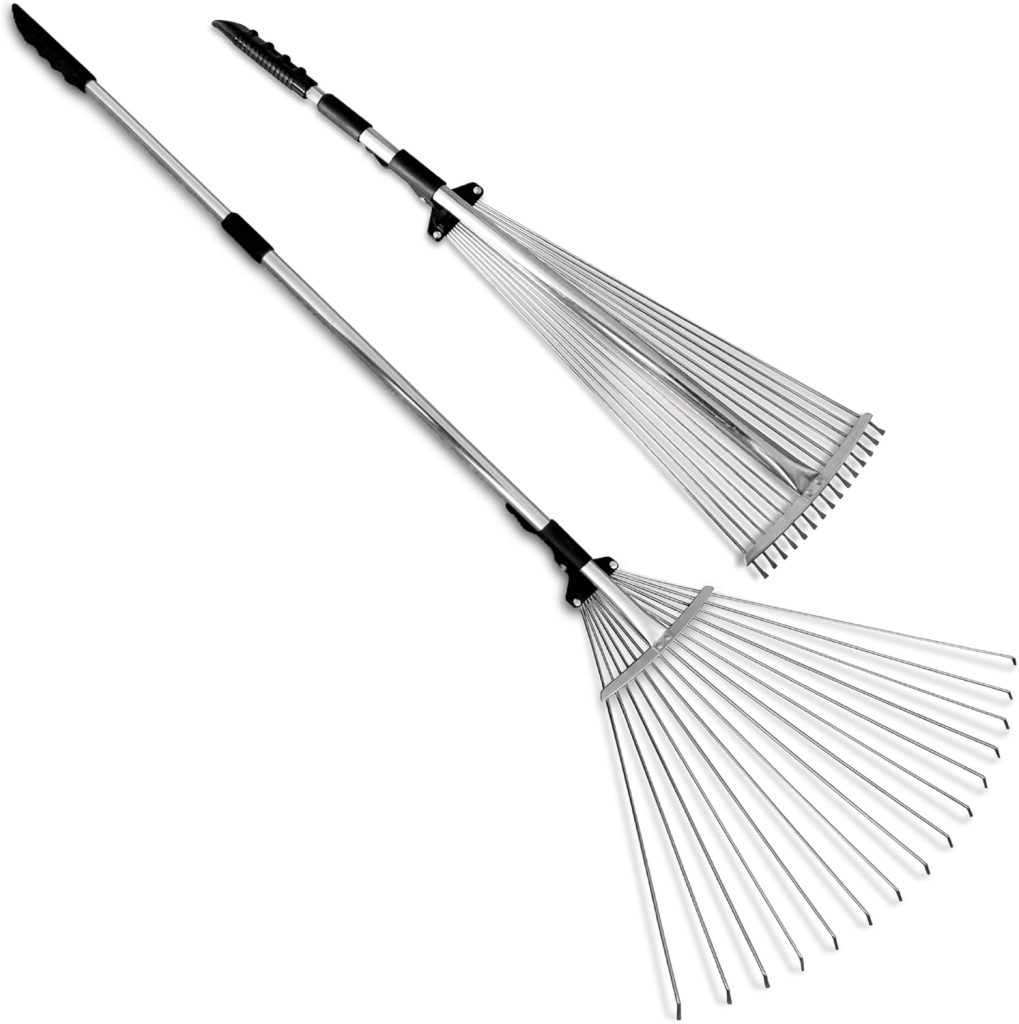
Union Tools Poly Leaf Rake (L) Or Tabor Tools Adjustable Metal Rake (R)
Found On Amazon
Wet leaves, sticks, and light gravel call for a metal head. The benefits of a metal rake include springy tines that pull debris from shrubs, loosen thatch, and handle heavier materials, though they can rust and may snag leaves. For dry leaf cleanup over big lawns, a wide plastic fan shines.
The advantages of a plastic rake are low weight, gentle action on turf, and less clogging, but plastic can crack in cold or under strain. Use this quick rake materials comparison: metal for control and durability, plastic for speed and a softer touch on lawns or synthetic turf.
Features to Look for in a High-Quality Rake
Strong, flexible tines that spring back instead of bending, plus a braced or cross-barred head, keep power in every pull and stop twist. For tougher jobs, a bow or level-head rake with short steel tines and a tight ferrule-to-handle connection delivers control and long service.
Handles in hardwood or fiberglass balance weight, absorb shock, and steer well. Cushioned grips help on long passes. These garden rake features define quality design for soil, mulch, and gravel. Built this way, a rake earns its place among durable garden tools, clearing leaves, spreading gravel, and leveling beds with less fatigue.
Handle Length and Comfort for Effortless Gardening
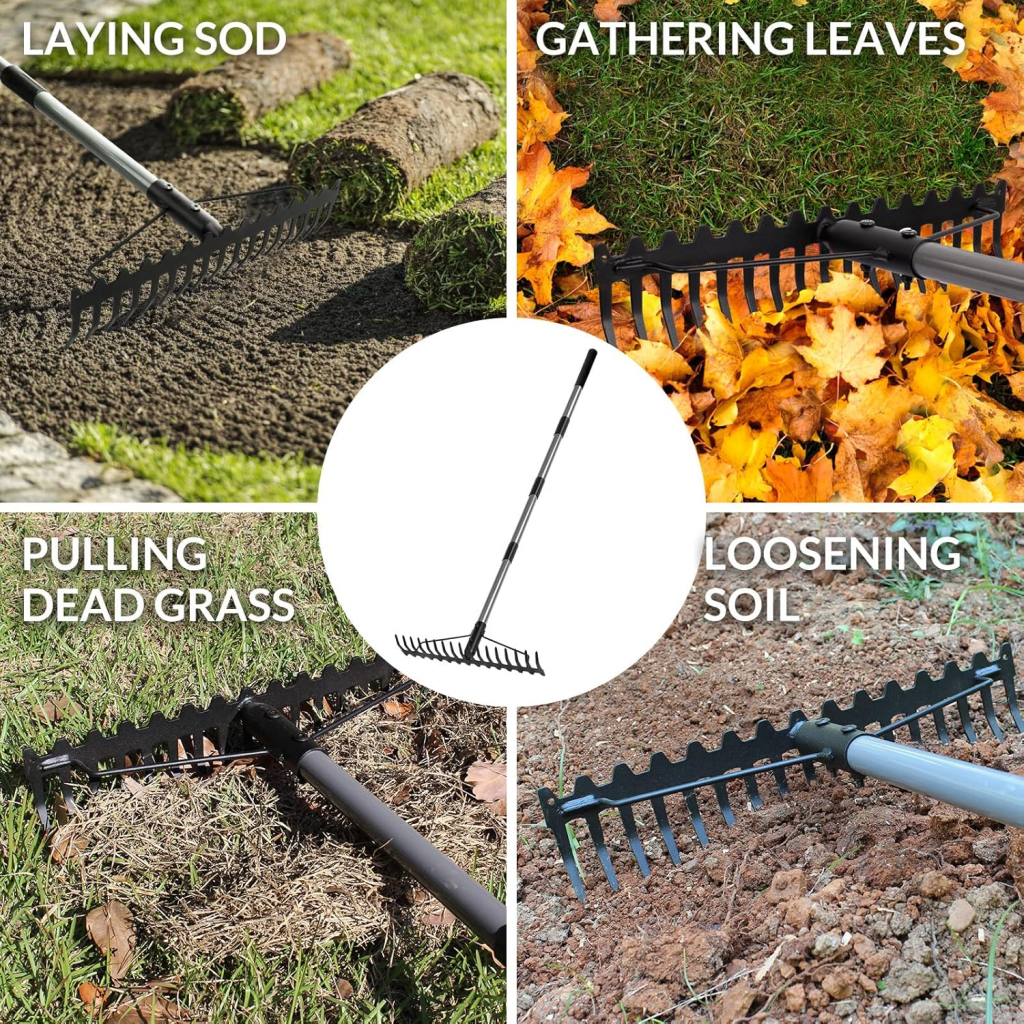
Long, cushioned grips that keep wrists neutral cut fatigue. Choose ergonomic rake handles with a secure, non-slip surface and a grip size that fills the hand. Handle length should let the user stand upright with a slight knee bend. That range serves as the best rake handle length because it limits bending and back strain.
Light but sturdy shafts in fiberglass or hardwood aid control, while oval or offset grips help maintain neutral wrist posture, and stainless steel promotes longevity.
And keep an eye out for telescoping options as well as they adapt to different heights and keep tools feeling truly comfortable. Height adjustable options in my tools are my personal favorite given I am a taller individual.
Weight and Balance: Finding Your Perfect Match
A lightweight garden rake makes long pulls and tight turns easier, easing arm and shoulder strain during cleanups. Choose a balanced rake design that feels neutral in the hands. Handle length should suit reach, and a longer handle can counterbalance the head for less fatigue.
Smaller beds or lower-strength individuals benefit from lighter heads, while heavier, durable bow rakes suit soil leveling but tire users faster. The best rake for beginners is a light, sturdy model with a comfy grip and moderate handle length that matches yard size and strength.
Bonus Features That Make a Difference
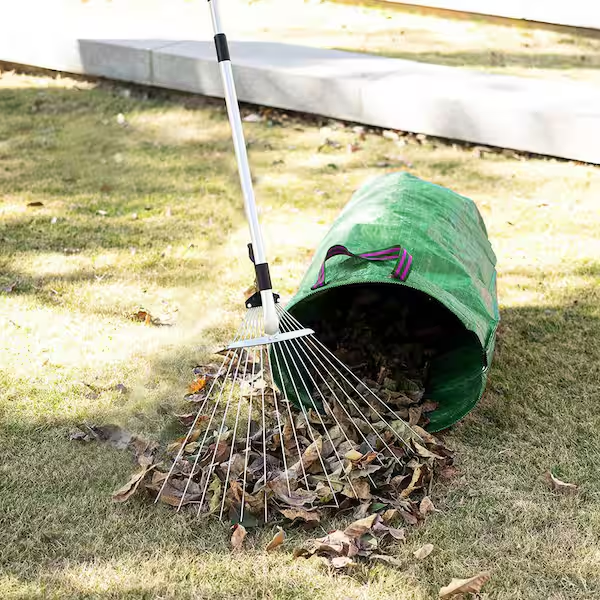
Small upgrades save wrists and speed cleanup. An adjustable garden rake with a telescoping handle sets the working height and narrows or widens the head for beds, paths, or tight corners.
Springy, flexible rake tines glide over uneven ground, pull thatch, and gather light debris without gouging the soil.
Look for ergonomic shafts with textured, anti-slip grips to keep hands steady during long raking sessions. These modern rake features turn repeated passes into cleaner pulls and fewer clogs, especially under shrubs and along edges.
How to Test a Rake Before You Buy
Grip the handle, plant the rake, and mimic short and long pulls to test the garden rake balance. The head shouldn’t wiggle, and tines should flex without twisting or staying bent.
Check comfort next: handle length that matches your height, a diameter that fits the hand, and a material that suits the job, with wood feeling solid and fiberglass or aluminum offering lighter use.
Inspect the ferrule and fasteners for a tight, secure attachment, then read multiple reviews for durability patterns before purchase. Buying online? Compare weight, tine strength, and adjustability, and save notes that you can revisit.
Maintaining Your Rake for Long-Term Use

Found On Amazon
Clean tools last longer, and rake maintenance is as simple as consistent cleaning. Knock off soil, wash if needed, then dry completely to prevent rust and disease spread. Lightly oil metal tines and ferrules. A thin coat of linseed, mineral, or other light oil protects bare steel.
For wooden handles, sand splinters and rub in oil to seal the grain. Store indoors on wall hooks to keep tools dry and off the floor, a smart habit in caring for garden tools.
Check hardware and tighten loose heads regularly to prolong rake lifespan.
Author’s Note: Check out our post Creative Garden Tool Storage Ideas for the best ways to store your gardening tools!
Conclusion: Invest in the Right Rake for Gardening Success
A rake matched to the job saves effort and keeps beds and turf healthier. Flexible leaf rakes lift debris without tearing plantings, while bow or level-head rakes break clods and smooth soil for seeding.
Narrow shrub heads reach under branches where wide pans can’t. That variety means different rakes are needed for lawns, beds, or paths, so choosing wisely pays off season after season. Pick what fits today’s chore, keep tines clean, and the best rake will be the one that gets used every weekend.
Clean that rake tonight, test a pass through the bed, and drop a quick photo in the comments below!

